
Citadel Hill is a hill that is a National Historic Site in Halifax, Nova Scotia, Canada. Four fortifications have been constructed on Citadel Hill since the city was founded by the English in 1749, and were referred to as Fort George—but only the third fort was officially named Fort George. According to General Orders of October 20, 1798, it was named after King George III. The first two and the fourth and current fort, were officially called the Halifax Citadel. The last is a concrete star fort.

The Mi'kmaq are a First Nations people of the Northeastern Woodlands, indigenous to the areas of Canada's Atlantic Provinces, primarily Nova Scotia, New Brunswick, and Newfoundland, and the Gaspé Peninsula of Quebec as well as Native Americans in the northeastern region of Maine. The traditional national territory of the Mi'kmaq is named Miꞌkmaꞌki.

Edward Cornwallis was a British career military officer and was a member of the aristocratic Cornwallis family, who reached the rank of Lieutenant General. After Cornwallis fought in Scotland, putting down the Jacobite rebellion of 1745, he was appointed Groom of the Chamber for King George II. He was then made Governor of Nova Scotia (1749–1752), one of the colonies in North America, and assigned to establish the new town of Halifax, Nova Scotia. Later Cornwallis returned to London, where he was elected as MP for Westminster and married the niece of Robert Walpole, Great Britain's first Prime Minister. Cornwallis was next appointed as Governor of Gibraltar.

The Cornwallis River is in Kings County, Nova Scotia, Canada. It has a meander length of approximately 48 kilometres (30 mi) through eastern Kings County, from its source on the North Mountain at Grafton to its mouth near Wolfville on the Minas Basin. The lower portion of the river beginning at Kentville is tidal and there are extensive tidal marshes in the lower reaches. In its upper watershed at Berwick, the river draws on the Caribou Bog while a longer branch continues to the official source, a stream on the North Mountain at Grafton.
Nora Bernard was a Canadian Mi'kmaq activist who sought compensation for survivors of the Canadian Indian residential school system. She was directly responsible for what became the largest class-action lawsuit in Canadian history, representing an estimated 79,000 survivors; the Canadian government settled the lawsuit in 2005 for upwards of C$5 billion.
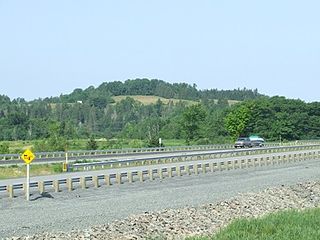
The Battle at St. Croix was fought during Father Le Loutre's War between Gorham's Rangers and Mi'kmaq at Battle Hill in the community of St. Croix, Nova Scotia. The battle lasted from March 20–23, 1750.

The Raid on Dartmouth occurred during Father Le Loutre's War on May 13, 1751, when a Miꞌkmaq and Acadian militia from Chignecto, under the command of Acadian Joseph Broussard, raided Dartmouth, Nova Scotia, destroying the town and killing twenty British villagers and wounding British regulars. The town was protected by a blockhouse on Blockhouse Hill with William Clapham's Rangers and British regulars from the 45th Regiment of Foot. This raid was one of seven the Natives and Acadians would conduct against the town during the war.
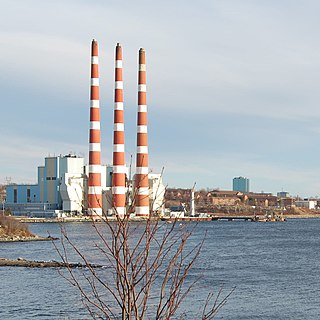
Tufts Cove is an urban neighbourhood in the community of Dartmouth, Nova Scotia, Canada. It is situated on the eastern shore of Halifax Harbour in the North End of Dartmouth. The neighbourhood boundaries of Tufts Cove are approximately from Albro Lake Road in the south to Highway 111 in the north, and from Victoria Road in the east with the harbour to the west.

The Battle at Chignecto happened during Father Le Loutre's War when Charles Lawrence, in command of the 45th Regiment of Foot and the 47th Regiment, John Gorham in command of the Rangers and Captain John Rous in command of the navy, fought against the French monarchists at Chignecto. This battle was the first attempt by the British to occupy the head of the Bay of Fundy since the disastrous Battle of Grand Pré three years earlier. They fought against a militia made up of Mi'kmaq and Acadians led by Jean-Louis Le Loutre and Joseph Broussard (Beausoliel). The battle happened at Isthmus of Chignecto, Nova Scotia on 3 September 1750.

The Raid on Dartmouth (1749) occurred during Father Le Loutre's War on September 30, 1749 when a Mi'kmaw militia from Chignecto raided Major Ezekiel Gilman's sawmill at present-day Dartmouth, Nova Scotia, killing four workers and wounding two. This raid was one of seven the Wabanaki Confederacy and Acadians would conduct against the settlement during the war.

The attack at Mocodome was a battle which occurred during Father Le Loutre's War in present-day Country Harbour, Nova Scotia on February 21, 1753 which saw two British mariners and six Mi'kmaq killed. The battle ended any hope for the survival of the Treaty of 1752 signed by Governor Peregrine Hopson and Mi'kmaq chief Jean-Baptiste Cope.
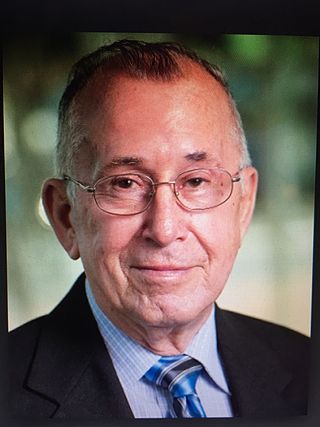
Daniel Nicholas Paul,, was a Canadian Miꞌkmaq elder, author, columnist, and human rights activist. Paul was perhaps best known as the author of the book We Were Not the Savages. Paul asserts that this book is the first such history ever written by a First Nations citizen. The book is seen as an important contribution to the North American Indian movement. One writer stated, "It's a Canadian version of Dee Brown's bestseller Bury My Heart at Wounded Knee and, as such, served a valuable purpose in raising public consciousness about Miꞌkmaq history, identity, and culture."

Nova Scotia is a Canadian province located in Canada's Maritimes. The region was initially occupied by Mi'kmaq. The colonial history of Nova Scotia includes the present-day Maritime Provinces and the northern part of Maine, all of which were at one time part of Nova Scotia. In 1763, Cape Breton Island and St. John's Island became part of Nova Scotia. In 1769, St. John's Island became a separate colony. Nova Scotia included present-day New Brunswick until that province was established in 1784. During the first 150 years of European settlement, the colony was primarily made up of Catholic Acadians, Maliseet, and Mi'kmaq. During the last 75 years of this time period, there were six colonial wars that took place in Nova Scotia. After agreeing to several peace treaties, the long period of warfare ended with the Halifax Treaties (1761) and two years later, when the British defeated the French in North America (1763). During those wars, the Acadians, Mi'kmaq and Maliseet from the region fought to protect the border of Acadia from New England. They fought the war on two fronts: the southern border of Acadia, which New France defined as the Kennebec River in southern Maine, and in Nova Scotia, which involved preventing New Englanders from taking the capital of Acadia, Port Royal and establishing themselves at Canso.
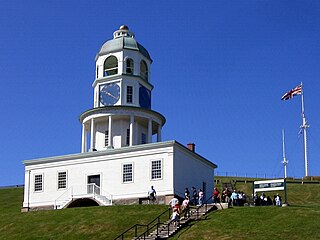
The Burying the Hatchet ceremony happened in Nova Scotia on June 25, 1761 and was one of many such ceremonies in which the Halifax Treaties were signed. The treaties ended a protracted period of warfare which had lasted more than 75 years and encompassed six wars between the Mi'kmaq people and the British. The Burying the Hatchet ceremonies and the treaties that they commemorated created an enduring peace and a commitment to obey the rule of law.

Treaty Day is celebrated by Nova Scotians annually on October 1 in recognition of the Treaties signed between the British Empire and the Mi'kmaq people. The first treaty was signed in 1725 after Father Rale's War. The final Halifax Treaties of 1760–61, marked the end of 75 years of regular warfare between the Mi'kmaq and the British. The treaty making process of 1760–61, ended with the Halifax Treaties (1760–61).
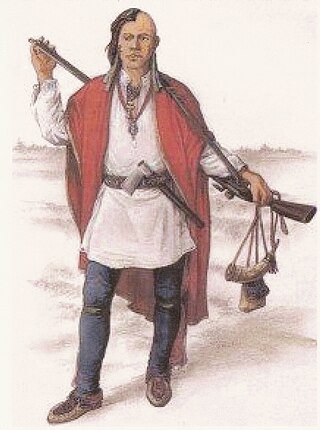
The military history of the Mi'kmaq consisted primarily of Mi'kmaq warriors (smáknisk) who participated in wars against the English independently as well as in coordination with the Acadian militia and French royal forces. The Mi'kmaq militias remained an effective force for over 75 years before the Halifax Treaties were signed (1760–1761). In the nineteenth century, the Mi'kmaq "boasted" that, in their contest with the British, the Mi'kmaq "killed more men than they lost". In 1753, Charles Morris stated that the Mi'kmaq have the advantage of "no settlement or place of abode, but wandering from place to place in unknown and, therefore, inaccessible woods, is so great that it has hitherto rendered all attempts to surprise them ineffectual". Leadership on both sides of the conflict employed standard colonial warfare, which included scalping non-combatants. After some engagements against the British during the American Revolutionary War, the militias were dormant throughout the nineteenth century, while the Mi'kmaq people used diplomatic efforts to have the local authorities honour the treaties. After confederation, Mi'kmaq warriors eventually joined Canada's war efforts in World War I and World War II. The most well-known colonial leaders of these militias were Chief (Sakamaw) Jean-Baptiste Cope and Chief Étienne Bâtard.

John Connor (1728–1757) was a mariner who ran the first ferry in Halifax Harbour, Nova Scotia, and was involved in the Attack at Mocodome during Father Le Loutre’s War, which effectively ended the Treaty of 1752.

Jean-Baptiste Moreau was first minister at St. John's Anglican Church (Lunenburg) (1753-1770) and one of the founding fathers of the community. He was one of two missionaries who first arrived in Halifax with Edward Cornwallis (1749) and served at St. Paul's Church (Halifax). His wife had the first child born in Halifax and was named Cornwallis after the Governor. Then in 1753 he was sent to help establish Lunenburg, Nova Scotia. Rev Moreau served the community throughout the French and Indian War. He reported to Society for Propagation of the Gospel (SPG) in London, "…the number massacred by Indians in Lunenburg District during the War was 32." He learned the Mi'kmaw language and is reported to have baptised a number of Mi'kmaq children. He is buried in the crypt of St. John's Anglican Church

The Peace and Friendship Treaties were a series of written documents that Britain signed bearing the Authority of Great Britain between 1725 and 1779 with various Mi’kmaq, Wolastoqiyik (Maliseet), Abenaki, Penobscot, and Passamaquoddy peoples living in parts of what are now the Maritimes and Gaspé region in Canada and the northeastern United States. Primarily negotiated to reaffirm the peace after periods of war and to facilitate trade, these treaties remain in effect to this day.
shalan joudry is a Mi'kmaw writer, storyteller, and ecologist. She is known for her poetry collections, including the multi-award nominated Waking Ground.


















